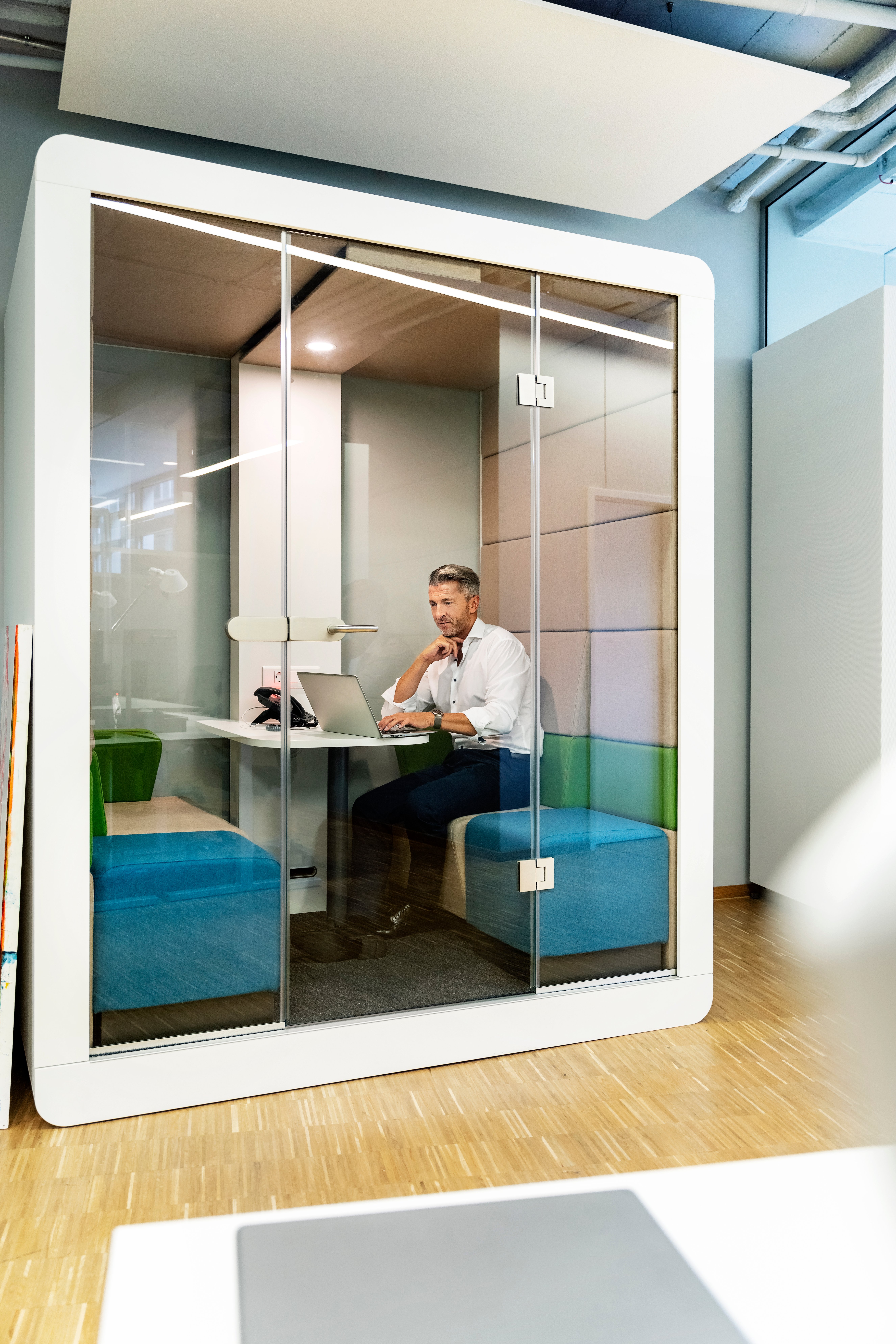How to Rebuild Productivity When Offices Reopen
Productivity is a delicate aspect of business. It can be compromised by companies that aren’t reading the room for what their employees want, or by external factors – like a pandemic that forces people to embrace remote work first, and hybrid workstyles second.
During COVID, plenty of surveys and reports and statistics came out documenting lower productivity rates, lower morale and feelings of isolation and declining mental health among workers. As companies now plan and roll out hybrid strategies, a dynamic office will play a key role in bolstering productivity and guiding companies out of the fog.
Office: home base for a productive workforce
Across industries, employees are expecting new degrees of flexibility in their working lives. There is considerable discourse around companies losing talent if hybrid arrangements aren’t established or, at minimum, managing less motivated and likely less productive staff.
People want to return to the office, but not all the time. One survey of 1,000 workers found that 86 per cent of people want to work somewhere other than the office at least once a week – but only 15 percent want to do so every day. It’s clear that most want to keep the freedom of remote work, yet infuse it with the in-person collaboration, meetings and social interactions that offices bring.
Companies must adapt to the changing needs of their employees, better support them and, in turn, build productivity. In the plan to embrace hybrid workstyles, it is time to reimagine the workplace. Here are our key considerations:
- Turn your space into a service: Offices must become a service for employees to access, not an arbitrary place to visit. They must offer frictionless access to technology and resources, meeting and work spaces in order to maximize productivity. Here, staff easily find and book the resources they need, when they need them, to support their specific tasks. At the same time, companies can rethink their real estate hubs by sourcing spaces closer to suburban locations, giving employees the option to touch base without having to travel downtown.
- Build a hub for collaboration: Traditionally, individual workspaces absorbed the largest footprint in an office. This will now change as densely packed office environments are no longer in step with today’s workplace realities and safety protocols. Instead, the office becomes the hub of collaboration and social connection. This means cutting the sea of individual workstations in favour of hoteling and touch down areas and designing more collaborative and versatile workspaces.

- Invest in the right technology: Tech-enabled office experiences existed pre-pandemic, but they’ve all but exploded as a productivity necessity in the new return-to-office environment. Booking systems allow employees to schedule their time in the office so they can be assured of both safety and productivity in space just for them on a given day. Concierge-like services can help employees find answers to common concerns quickly with automated support. Virtual administration can organize both time and projects. Digital twins can run virtual simulations of processes, products or services to prevent problems, eliminate downtime, and more.
- Health and safety is always paramount: If employees don’t feel safe, they won’t be productive. Build trust and ensure safety by tracking and using indoor location data to keep occupancy levels comfortable, monitor physical distancing, optimize cleaning, and enabling smart adjustments to floor layouts over time.
- Improve work-life boundaries: When you work at home, lines become blurred. Companies must focus on how best to support employees as they transition back to the office in a new capacity. With productivity boiling down to motivation, efficiency, and choices, HR managers can tap data analytics to help employees manage their efforts inside and outside the office and in so doing redefine what performance management looks like.
In the new office work paradigm, as employees need support in adjusting to life after COVID, productivity levels will be tied in large part to a dynamic office and the flexibility it affords everyone.
Accurate space utilization data through Wi-Fi?
We'll prove it to you.
See why industry leaders leverage InnerSpace to generate valuable insights that go beyond occupancy.

